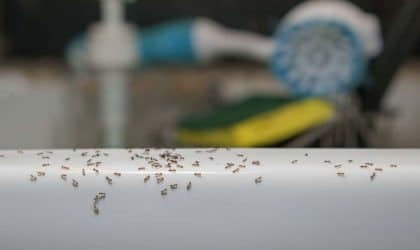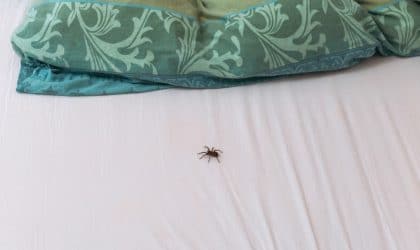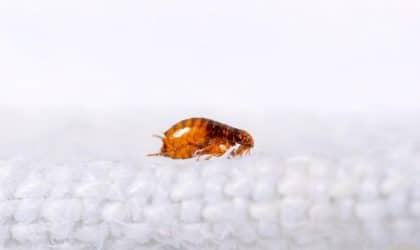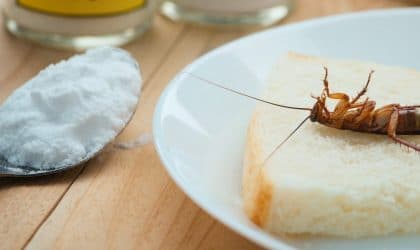How to Get Rid of Ants In Your Car and Prevent Them From Returning
If you have ants in your vehicle, there’s a few simple things you can do to get rid of them. It starts and ends with cleanliness, but can also need a pesticide and maybe treating the area you park or parking elsewhere. Here’s all you need to know.
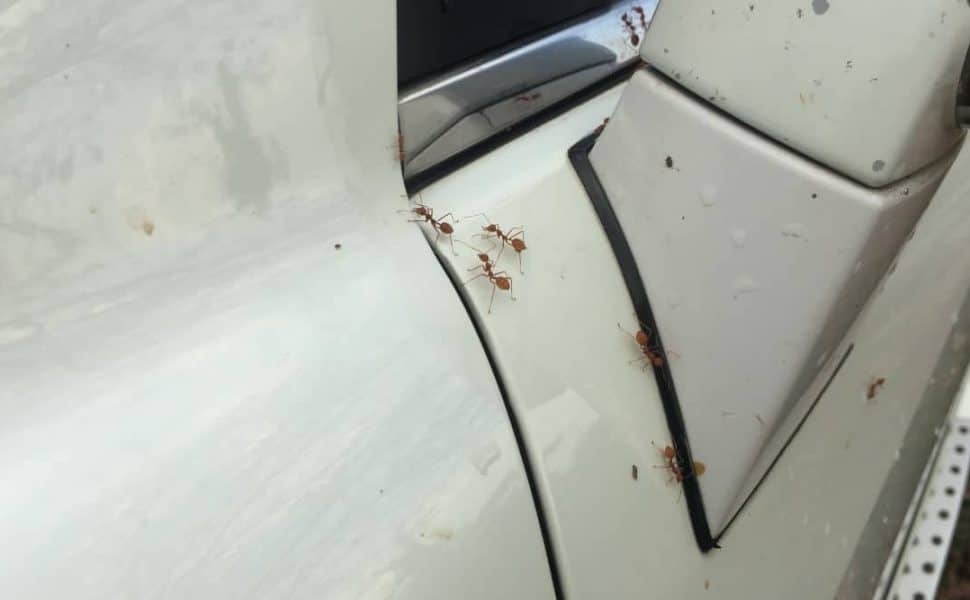
Can you imagine having a phobia of ants and being strapped to a chair while they crawl all over you? Of course you can, that’s why you are here, right? You strapped yourself into your car seat and realized you had ants crawling all over you as you were driving along.
It’s what nightmares are made of. And even if that hasn’t happened yet, you can be sure that it will happen soon if you do have ants in your car.
It’s a dangerous position to be in and an experience that many have encountered. In some rare cases, people have heard these pests rustling inside door panels where they have built nests.
If you’ve ended up here looking for answers because you’ve found yourself in this situation, rest assured that you’ve come to the right place. This article will show you how to get rid of ants in your car once and for all. As well as educate you on why they are there in the first place, so you can avoid this situation again.
Let’s dive straight into the nightmare of ants in cars!
The Likely Reasons Ants are in Your Car
Ants are organized creatures of habit. Once they have established their nest, they send out the worker ants to forage for food and water. There is no method to how they go about it. They walk around, following scents, until they find something.
So, just as they wander around the home and garden, they wander into parked cars if they are stationary.
Often cars will be full of rubbish and crumbs that the ants will take as food. Once they hit the jackpot, they will leave a scent to lead other ants back to the car, and the cycle begins.
Ants are unlikely to nest in cars that regularly move as it disrupts the nest-building activities, and the ants cannot leave to go and forage.
Stationary vehicles such as classics or projects that don’t drive regularly are more likely to have an infestation and nest.
The two reasons they will return to a vehicle are food and water. So, if your car is untidy with food packets and crumbs in it or has a leak and is damp on the inside, the chances of ants are high.
Identify the Ants: What Types of Ants Infest Cars?
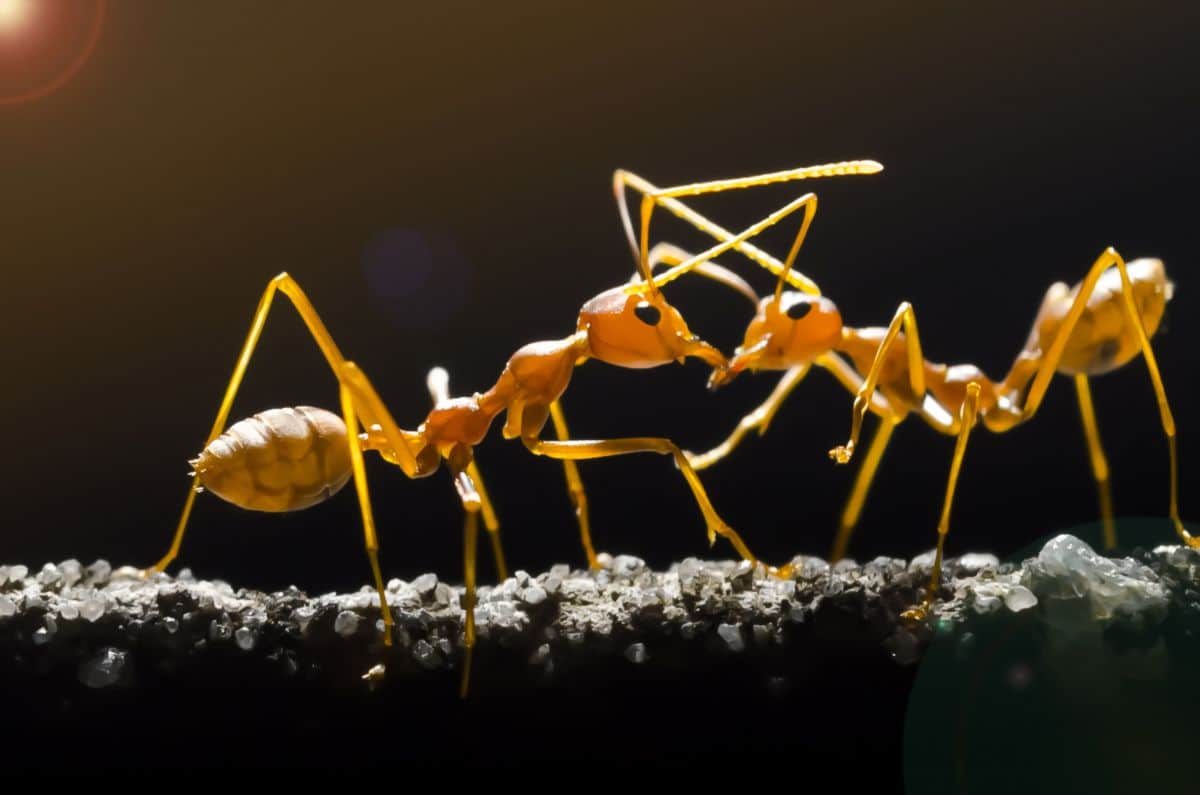
Before you can tackle the problem, the first thing you need to do is identify the type of ants in your car.
Depending on where you live can determine the type of ants you’ll see. Local variations exist, and not ants can be found in all places, but pretty much all species will enter a car looking for food.
However, it’s typically carpenter ants or crazy ants that search for food in cars. Though it isn’t rare to find the dreaded fire ants doing so.
Take a look at this guide on the many different types of ants to identify what you’re dealing with, then come back here for advice on how to get rid of them.
What Damage Can They Cause?
Most ant species are harmless to both humans and cars. As you know, they are either passing through for food or are just there for the shelter it provides.
If they nest though, such an ant infestation may damage internal insulation foam as they tunnel into it to create the galleries required for nesting.
Some hardier species such as the red ant, fire ant, and carpenter ant are very destructive. Not only do they bite people, but they can also chew through wood, wires, and foam. With these species being the larger varieties, they can cause mega issues with your car if left unchecked.
Stripped wires can cause shorts in electrical circuits and components. The problem is then tricky to locate and expensive to fix.
If it is a classic car and they destroy the wood and chew through the leather and foam inserts, the car can quickly deteriorate, which is an expense that you could do without.
The good news is that most ants are easy to get rid of when it comes to car infestation. Just be sure to act on it as soon as you notice the little critters.
How to Get Rid of Ants in Your Car
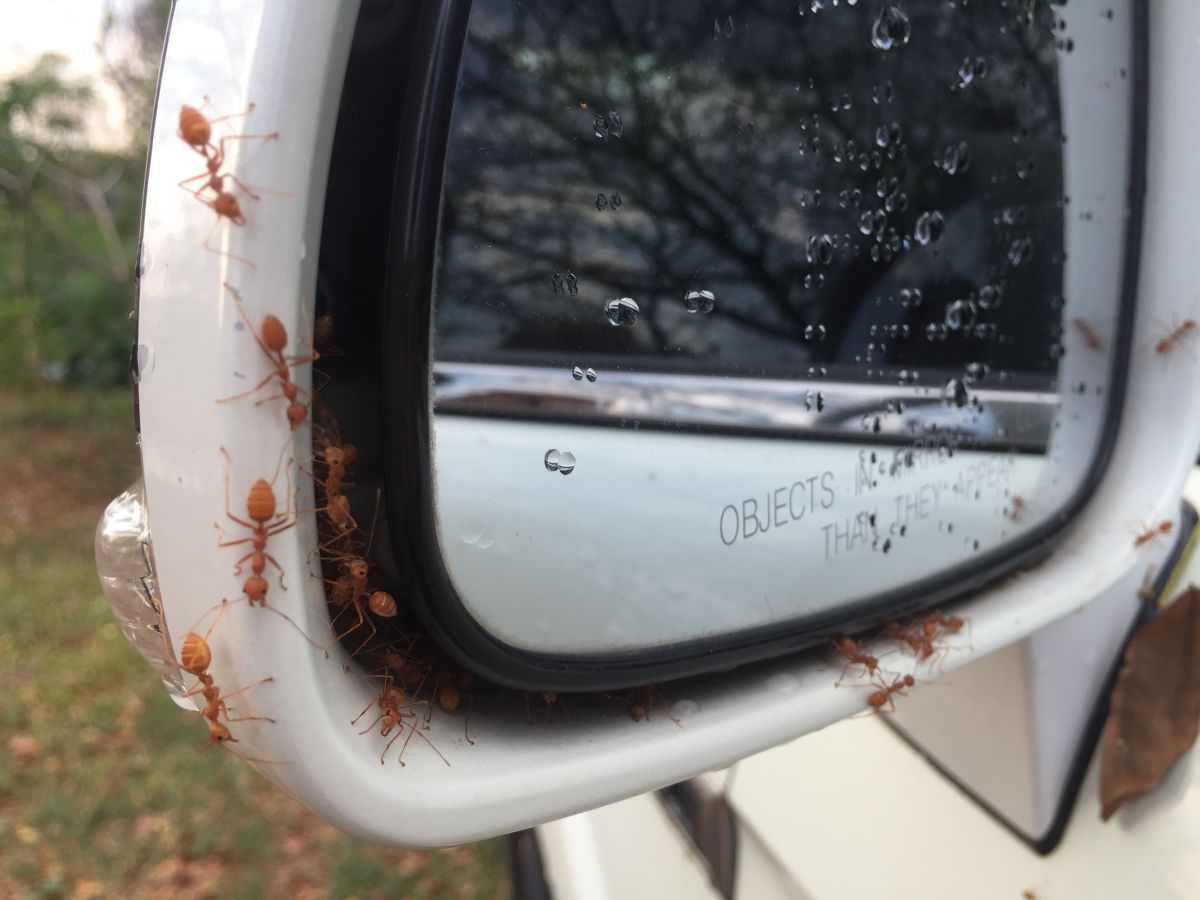
Here are the best ways to get rid of ants in your car.
Clean! – Remove all Trash
The easiest way to get rid of an ant infestation in your car is to have a tidy up. By removing all traces of trash, hoovering up crumbs, and cleaning away any sugar residue from drinks, you remove the food source they have found. Once the trash is gone, they will search elsewhere for food.
Then, use a full power hoover to get into all the nooks and crannies to remove any ants and food crumbs from the car. Shove it under the seats and other places that you can’t see. As there’s bound to be crumbs there too.
You should then wipe down seats, carpets, and door cards with a strongly scented spray cleaner. Preferably a citrus one as ants detest the smell, plus it will impress your human vehicle guests.
The fresh scent will also remove the pheromones that the workers follow to return to successful foraging spots. Confused and unable to find their way back, they will wander off elsewhere in search of food.
Use an Ant Bait and Ant Spray
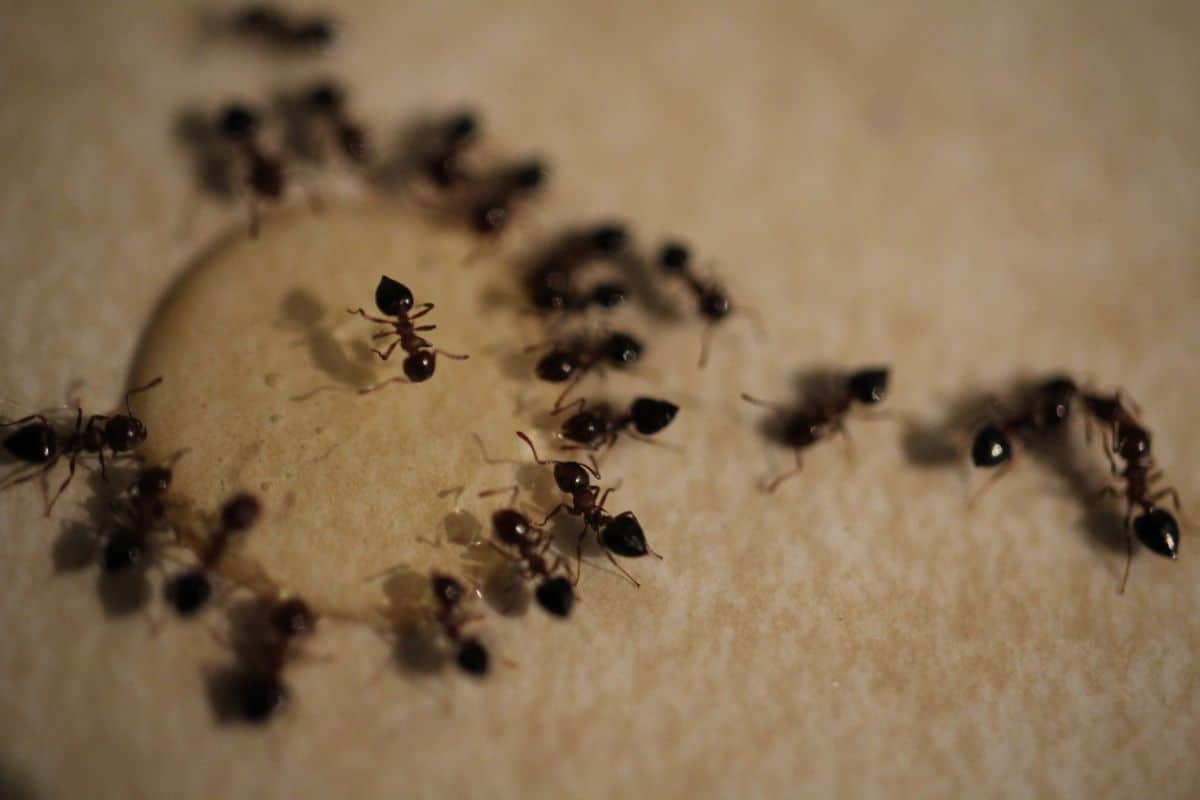
If cleaning your car throughout does not rid you of the pesky little critters, you can look to use ant killer products such as ant baits and sprays. And if they are still there, there might be more of them than you think!
The bait method is the most likely approach to get rid of them long-term, while the spray will kill the ones you can see right now on contact.
With bait, the name of the game is to get the ants to collect poisoned food and take it back to the colony. They will feed the queen and kill the nest. Because it’s likely the nest is nearby, this approach will prevent them from coming back.
On the other hand, the spray is great if you have only seen a couple of ants that you think are passing through. It will kill them within seconds. And if they are a few stragglers, it could be as simple as point and shoot to end the infestation.
Any Homemade and Natural Solutions?
Many people prefer natural and less harsh homemade solutions. If you fancy trying this first, give the following solutions a go.
Dawn Dish Soap
Yep, the same stuff you have in your kitchen for the dishes is also super-effective when it comes to wiping out an ant infestation. It acts in two different ways that make it a great ant killer.
Firstly the degreasing agents that degrease dishes also break down ants’ exoskeleton – removing the lipids that give it a protective coating, accelerating the evaporation of moisture, which leads to fatal dehydration.
It also has added surfactants designed to help the water lather, which means water changes viscosity. Ants can no longer float in it, so they drown. It might sound a bit savage, but it works and needs to be done.
To make a batch of this homemade ant killer, simply mix two cups of water, three tablespoons of blue Dawn dishwashing liquid, and three tablespoons of table salt. Mix it gently to prevent too much lather forming and put it in a spray bottle. Then, spray the ants directly, and clean the car interior.
Orange Oil
Orange oil comes in a heavily concentrated form that contains d-limonene. D-limonene is proven to kill on contact for many insect types, including ants. Plus, it’s also a repellant that can continue repelling the ants after application due to its strong smell.
Readymade orange oil ant killers are available, as well as pure essential oils that will allow you to make your own. Citrus-based oils became popular after many people found success in killing ant hills with citrus flavor hand soap.
It works to break down the wax coating on the ant’s respiratory system, causing suffocation.
To make your own, mix one and a half ounces of concentrated orange oil with three ounces of Dawn dish soap and a gallon of water. This mix can then be used as a kill on contact spray and repellant to deter ants from entering the vehicle again. Just spray it on surfaces and allow it to dry.
Essential Oil Spray
Essential oils have long been used as an effective repellent for keeping away ants and other such insects. Many people are aware of the homeopathic benefits of essential oils, but few are aware of their application and effectiveness as an ant repellent.
Essential oils are heavily concentrated and have intense aromas that interfere with the scent receptors of the ants. Just like the orange oil described above.
By overpowering these receptors, you prevent them from picking up the pheromone trails left by other workers. They will then go looking elsewhere to get away from it.
The essential oils with proven effectiveness on ants are lemon oil, peppermint oil, clove oil, and tea tree oil. Lemon oil, much the same as orange oil, has d-limonene, which is toxic to ants.
All of these oils can be used in two ways. You can drop the oils on cotton wool balls and place them inside your car. You can also make a solution that you can spray around the car and onto the ants themselves.
To make your own DIY essential oil ant spray, mix a cup of boiling water with half a teaspoon of liquid dish detergent. Then add three to five drops of lemon oil, and again for peppermint oil and tea tree oil, and pour into a spray bottle.
Find the ants, spray them directly to send them packing, and spread it around the car to stop them from returning. Your vehicle will also smell the best it ever has.
Places to Check and Treat for Ants in Your Car
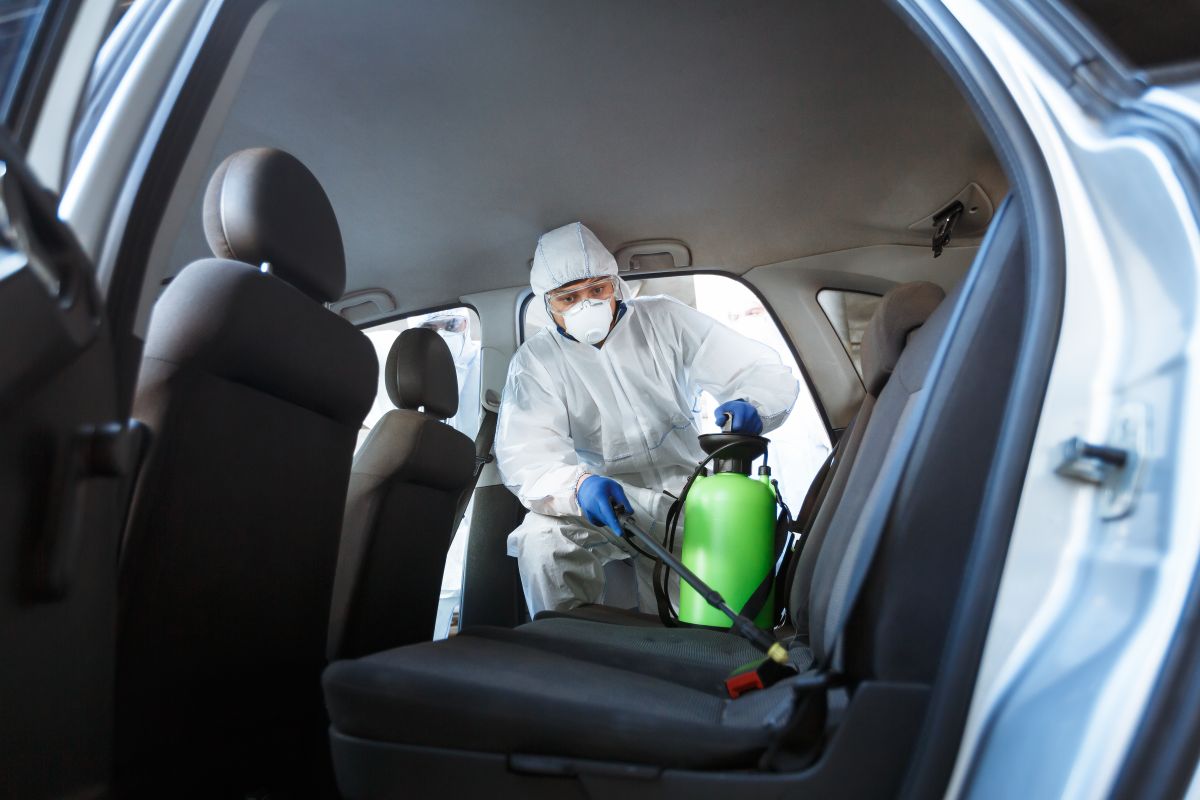
Honestly? Everywhere. They are so small and forage so widely that they could be anywhere and everywhere in your vehicle.
You will need to check and treat the floor and all floor mats – removing them to check diligently underneath.
You need to check the car door frame, in the glove compartment, the wheel arches, wheel wells, and fender wells.
Remove and treat any seat covers, as well as the seats themselves. Check in the trunk, the bonnet…You get the idea. Just check and treat EVERYWHERE. And be thorough.
How to Prevent Ants Coming Back into Your Car
Now you know how to get rid of them, it’s just as crucial to prevent them from coming back. Here’s how.
Keep Your Car Clean
As with the home, it is crucial not to leave anything lying around that the ants will return for, such as food and stagnant water. So, it’s best to clear out any garbage such as water bottles, coffee cups, crumbs, and of course, the obligatory sauce sachet from your visits to the drive-thru. We are all guilty!
If you have floor mats in your car, it is worth taking them out for a thorough vacuum and scrub. Washing them with a citrus soap will help to repel any stubborn ants that may remain in the vehicle. A good brush-off and scrub will remove almost all food and dirt, as well as any dead ants and eggs.
Once the big stuff is gone, you can wipe down the dash, doors, and seats with your citrus spray. This will help remove the pheromones left by foraging ants and repel any other passing ants from taking a peek inside.
Vacuum Thoroughly
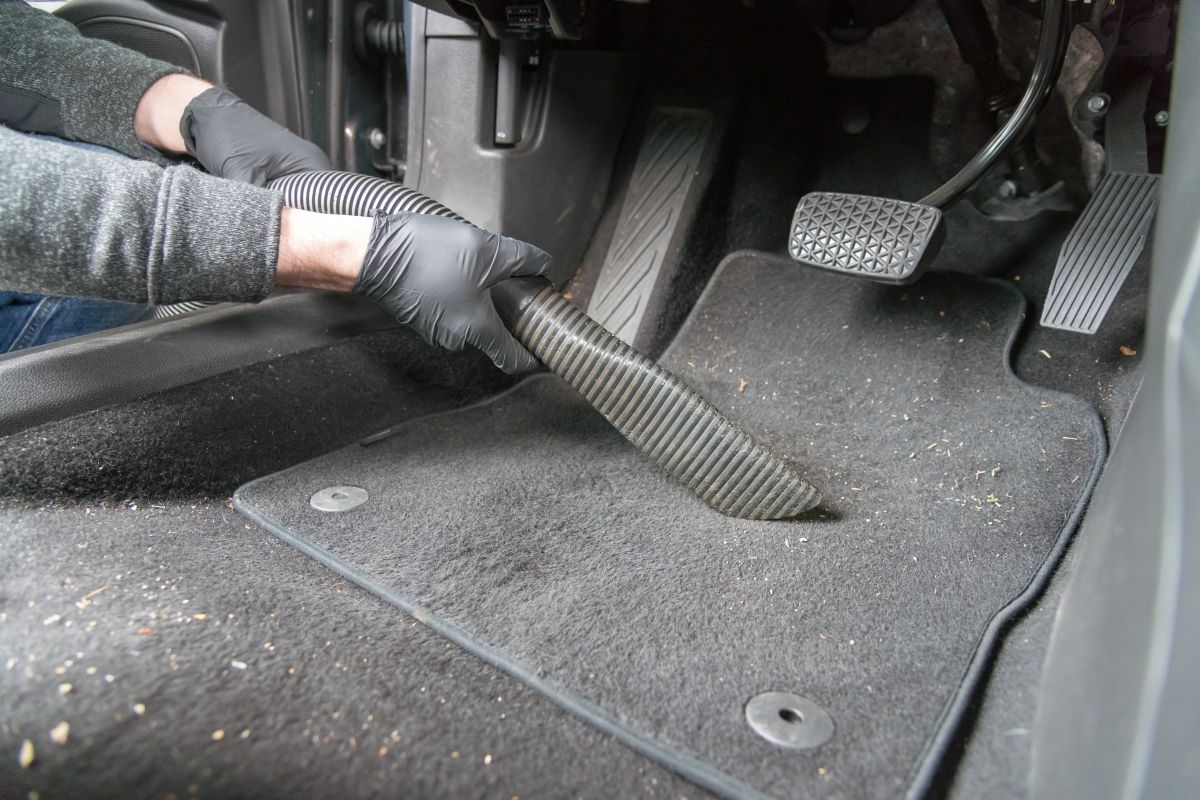
Once your car is empty, tidy, and pheromone-free, be sure to vacuum it throughout, front to back. Pay particular attention to the vents, crevices, and under seats. This will remove all food debris and any ants that may have avoided the dustpan and brush.
Just be sure to change the bag before you take your car vacuum back inside. Otherwise, they’ll head straight to your cupboards and set up nest in your home.
Try to Destroy Close by Nests
The ants in your ride must have come from somewhere else. A nest close by will mean they have entered via the wheels and arches where the car meets the ground. Being committed foragers, they will wander anywhere in search of food.
To make sure ant infestations are gone and don’t come back, it is essential to destroy any nearby ant colony. If you can find them, you can attack them directly with an appropriate product such as a mound drench ant killer or ant powder.
If you can’t see them, it’s time to break out the ant bait. A baited product will ensure the colony gets poisoned and dies off. And this will almost always guarantee no return of the ants in the near future.
Consider Changing Parking Spots
Sometimes your best efforts will not be good enough, and the ants will return. As a last resort, if this is the case, try parking your car in a different place away from where you first encountered the ants.
If the problem stops, you will know that a nest has not been treated correctly in that vicinity.
Once you have moved your car, be sure to wash down the wheels and tires so that the pheromone smell does not lead them to the new location. This can be done quickly with soap and water. And then apply a liberal spray of ant repellent, pesticidal or natural, to prevent the critters from climbing back in.
Professional Pest Control Solutions
If you have a huge problem that is so overwhelming, or either do not have the time, ability or inclination to deal with an ant problem yourself, there will almost certainly be a pest control service local to you who will be willing to help for a fee.
Simply hit up google, with a search for ‘local pest control service’, and many options will be there waiting for the work. Sometimes it’s best to hand these things off to the pros!
Conclusion
That, my friends, is the end of this journey. Now you know how to get rid of those unwanted passengers with ease. Just follow our guide above, and you’ll be back to riding solo in no time.
The key to success is to be thorough. Ensuring your car has nothing on offer for the ants means they are more likely to pass through and not return. Or, try their luck on your neighbor’s car.
So, next time, be sure to take the time to retrieve that dropped French fry or any food wrappers before they feed your foes.
If you have any success stories of how you banished ant infestations from your cars with a method not covered above, let us know in the comments below. We’d love to hear it!
We’ll see you there for a chat about all things ant-related.
Happy hunting.
Share this post
Save time and money on pest control
Subscribe to expert DIY pest control tips, pest control product reviews and information.

